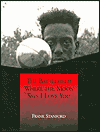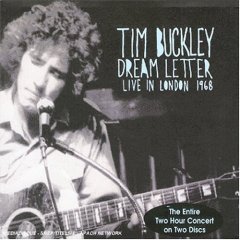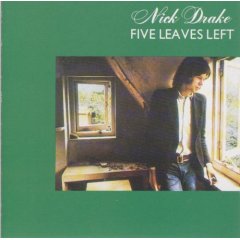
|
Jim Doss is co-editor of Loch Raven Review. Jim was born and
raised in Lynchburg, Virginia, in the foothills of the Blue Ridge
Mountains. He has lived most of his life in the mid-Atlantic region with
the exception of several years in Arizona. His work has appeared in
Poetry East, Words-Myth, Poems Niedergasse, and other publications. A
graduate of the University of Virginia, he earns his living as a
software engineer, and lives with his wife and three children in
Maryland.
Frank Stanford (1948 - 1978) was born in Southeast Mississippi. He was adopted by Dorothy Gilbert Alter, who married Albert Stanford a year later in 1952. Frank grew up in Memphis, Tennessee, and spent his summers in the camps along the levees which his father built and repaired, and in the Ozarks. He was educated at Subiaco Academy, a Benedictine Monastery, and attended the University of Arkansas without obtaining a degree. He worked as a surveyor and founded Lost Roads Publishers. He died on June 3, 1978 of self-inflicted gunshot wounds. Tim Buckley (1948 - 1975) was born in Amsterdam, NY. As a child, he moved to Anaheim, CA. He released his first several folk influenced albums before he was 20. Always the restless experimentalist, his style rapidly evolved to include jazz, psychedelia, funk, soul, and avant-garde rock. His albums continued to sell poorly, and the experimental Lorca and Starsailor proved too "weird" for audiences of his day. In an effort to become commercially, he released three rock/funk albums that seemed like half-heated attempts compared to his earlier albums. He died on June 29, 1975 after returning from touring of a heroin overdose. Nick Drake (1948 - 1974) was born in Rangoon, Burma of British parents. But he grew up at Tanworth-on-Arden, England. Drake recorded three albums during his lifetime: Five Leaves Left, Bryter Layter, and Pink Moon. He is known for his gentle, autumnal sound and his right-handed guitar finger picking techniques. Drake albums sold poorly during his lifetime and help feed his clinical depression. He died on November 25, 1974 of an overdose of the anti-depressant Tryptizol. |
Summer 2006 Table of Contents - Vol. II, No. 2 |
|
|
Jim Doss
The Fickled Finger of Fate: Frank Stanford, Tim Buckley, and Nick Drake Recently I have been doing a lot of thinking about the 60’s and the
70’s, those years when my generation came of age. I have
been reading the
literature of that period as well as listening to the music from the
widely popular to the obscure. In my wanderings through these years I
have re-discovered three artists who have cult followings to some
degree, but still remain relatively unknown to the general public. Each
is utterly unique, no imitations possible. They refused to
pay attention to popular trends and pursued their art wherever their
muse led. Yet they were flawed men who lives ultimately ended in tragedy
before they were 30 years old. But in their all too brief time on earth,
each produce an impressive body of work, and their art lives on. Thirty
to forty years later there’s no more compelling argument I can make for
today’s generation to listen to these artists than they deserve it. * * * * *
Stanford has been called by some reviewers a swamp-rat Rimbaud, and a redneck surrealist. Those descriptions provide some idea of the energy and freshness of the writing in this book, the unique gift for simile and metaphor. Battlefield is an heroic epic that follows the adventures of twelve year old clairvoyant Francis Gildart through a series of adventures: real, or imaginary, dreams or visions. Time is relative, reality is relative, only death has dominion. A dizzying array of characters pop-up throughout: God, Jesus, Death, Beowulf, Unferth, Elvis, Sonny Liston, Charlie Chaplin, Blake, Lorca, Mark Twain, King Arthur, etc., and the characters that appear throughout much of Stanford’s writing: Jimmy, Francis’ brother; Charlie B. Lemon, O. Z., Ray Baby, Baby Gage. A line from one of Stanford’s stories seems to apply to the vision of Battlefield: “I worked and worked the ore of my dreams until it was a fine radium.” But most of all, this book is a song of the south. It's settings range from Mound Bayou, Mississippi to Memphis, Tennessee and the levee camps along the Mississippi River at a particular time in American history. Civil rights is a unifying theme in the budding consciousness of Francis, a white boy who has a predominance of black friends. Stanford moves effortlessly and naturally through the vernaculars of the races capturing the regional and class-based nuances of the language in the dialogue. Francis champions the rights of his friends through the historical landscape of Jim Crow, freedom marches, and lynchings. Loyalty to his friends is his code of chivalry. Insults and injuries demand revenge, action is swift and decisive against the Grendels that inhabit his landscape. The magic of Stanford’s writing is that the outrageous, bawdy, funny as hell, stream-of-consciousness narrative holds together and pulls the reader deeper and deeper into Francis’ persona. The book is like a radioactive metal, the reverse of Kryptonite, that makes the reader stronger with lines like: I’ll just bleed so the stars can have something dark to shine in look at my legs I am the Nijinsky of dreams Brilliant words, of which there are many examples in this novel-length poem. For those who need a more easily digestible introduction to Frank Stanford’s work before diving into such a weighty book, the Alsop Review features a collection that showcases his remarkable talents. The editors at Alsop have performed a great service to lovers of poetry by collecting most of Stanford’s poetry books published during his lifetime as well as paintings by his wife, photographs of Stanford and friends, letters, essays by Stanford and essays by others on his work. These can be accessed at The Frank Stanford Collection. * * * * *
Dream Letter: Live in London finds Tim Buckley at the height
of his powers. Recorded October 7, 1968 at Queen Elizabeth Hall when he
was 21, this musical chameleon, whose short but prolific career took him
from folk to improvisational jazz to white hot funk, is captured here
between his folk and jazz phases. Live albums either tend to be dull and
uninspired efforts or bright, vibrant affairs filled with spontaneity
and excitement. Fortunately, this album falls into the latter category.
Buckley delivers a soaring two hour performance that surpasses just
about all of his studio material, and the sound quality is the best I’ve
ever heard on a live recording. * * * * *
Nick Drake is the best know of the three artists in this review. His
songs have appeared recently in TV commercials and movie soundtracks.
This newfound success stands in sharp contrast to the meager recognition
he received during his lifetime when he could only manage to sell a few
thousand albums. Part of his lack of popularity was due to his
reluctance to perform live and promote his music. For his songs, Drake
used non-standard guitar tunings to make his intricate finger-picking
patterns easier to execute and the audience didn’t have the patience to
wait as he retuned between songs, nor was his skin quite thick enough to
endure the inevitable criticism that all artists must endure.
© Jim Doss |
|


